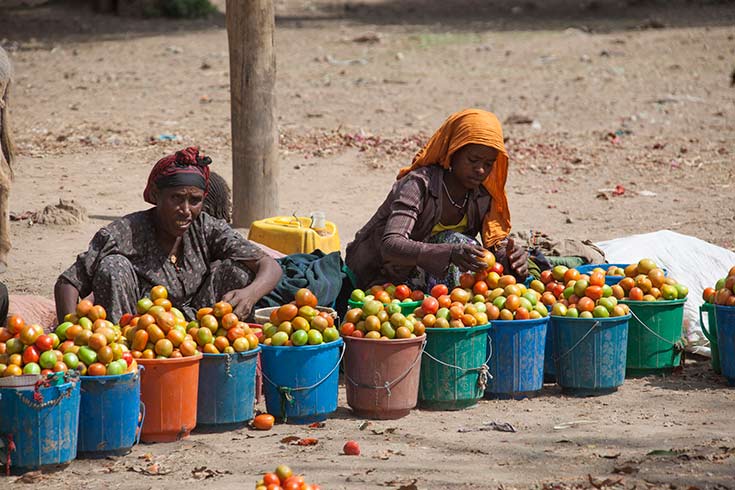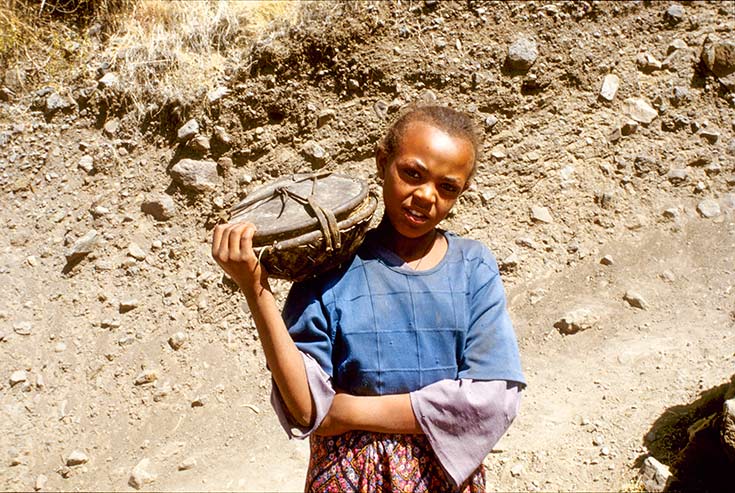How to get communities in East Africa to trust climate science
Jennifer Leavy, Senior Research Fellow at the University of East Anglia, UK, highlights the importance of communicating climate science effectively. This piece was originally published by The Conversation

An Ethiopian market: The country is currently in the grip of the worst drought for 50 years, with millions relying on emergency aid (Oleksii Demidov/123rf)
There’s no delaying it any longer – if people are to adapt successfully to the realities of climate change, they need reliable climate information. This will help them to make informed decisions so that individuals, households and entire communities are better prepared for the world’s changing climate.
This need highlights the importance of communicating climate science effectively – getting the right information to the right people and in the right form.
Research shows that a lack of trust in data and information provided by official sources, as well as in public institutions and policies, can cripple adaptation efforts.
Climate change poses a threat to the economies of east African countries. The effects are likely to be particularly acute because of the high dependency on agriculture, a sector that accounts for more than 40 per cent of gross domestic product across the region.
Yet in our work in East Africa we’ve realised that people tend not to trust climate information. Here we detail the factors that we believe cause this mistrust, and suggest ways to restore confidence in the science. The research took place in the Awash River Basin in Ethiopia under the Adaptation at Scale in Semi-Arid Regions, or ASSAR, project.
Why people don’t trust what they’re told
The first problem we’ve found is that typical climate forecasts are too general. When information is generalised over too large an area, people at the local level perceive it to be almost meaningless. For example, if you live in a small East African village, the forecast for your nearest city – which could be hundreds of kilometres away – won’t apply to you.
People also believe that climate information often details climate patterns that are contradictory to what actually occurs. When this happens, people tend to disregard forecast information completely.
To remedy this, multiple sources of climate evidence need to be put together and contextualised. The information must be shared with various groups in the communities. How the different sectors like agriculture, water, land and health will be affected must be explained. Everyone affected should be made aware of what the situation is like.
A second challenge we saw is that people at the community level tend to have little or no access to climate information. Information they do receive is typically presented with too much scientific detail and not enough practical advice. Often it is in the form of probabilistic forecasts which local communities have difficulty interpreting.

People at community level in East Africa have little or no access to climate information (Joerg Hackemann/123rf)
This problem can be compounded by differences in languages spoken and interpretations of the meaning of the information. This includes differences in the perceptions of what normal variations in climate are. To counter this issue it’s important to focus on how to translate forecasts and, in particular, how to communicate information about risk and uncertainty.
Meteorological forecasts need to be broken down and interpreted in ways that help local people to understand and use them in their livelihood planning. This could entail a meteorologist sitting with community members and working through each forecast with them. Alternatively, local communities could be trained to interpret and use climate-forecasting information directly.
Replacing a top-down approach
In East Africa, initiatives like the Arid Lands Information Network centres can be a key intervention to enable access. The initiative is in seven Kenyan counties and serves more than 8,000 communities with Internet access, training and computer skills.
The Ethiopian Institute of Agricultural Research has also been working to downscale forecasts to local areas of Ethiopia. They help people to interpret the forecast so they understand what it means for their agricultural activities.
The top-down nature of most climate science information and communication programmes means that many of these factors are often overlooked. This creates further resistance to climate science. It is vital for climate science communication programmes, activities and policy makers to work with local communities.
Unilaterally implementing climate science communication leaves communities feeling isolated and with a sense of distrust. Programmes and plans must include local communities to ensure that all activities are congruent with community needs.
Achieving the things described here will require climate science communication to have dedicated resources and activities that are ongoing and continuous. But we believe that these actions will build the public’s trust in climate information. It will lead to more efficient and effective adaptation to climate change in East Africa.
This article was originally published on The Conversation. Read the original article.
Jennifer Leavy, 13/04/2016